My Ethiopian adventure continues! Thanks to full or cancelled flights, I fly into Arba Minch two days later than anticipated. This village is the gateway to Omo Valley, home to several of Ethiopia’s remote tribes.
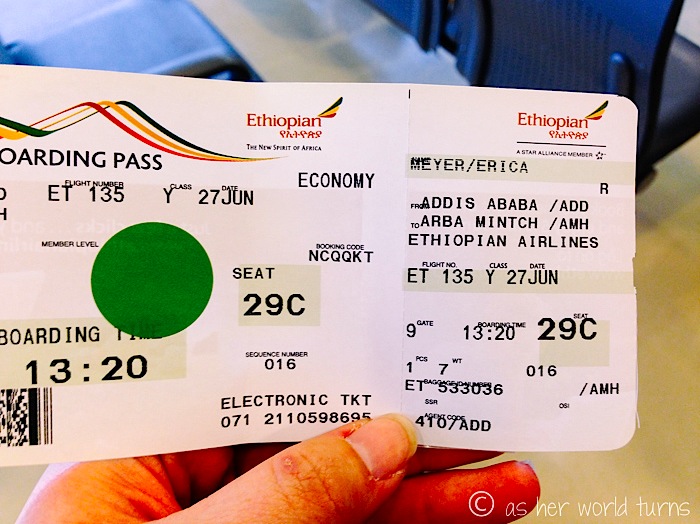
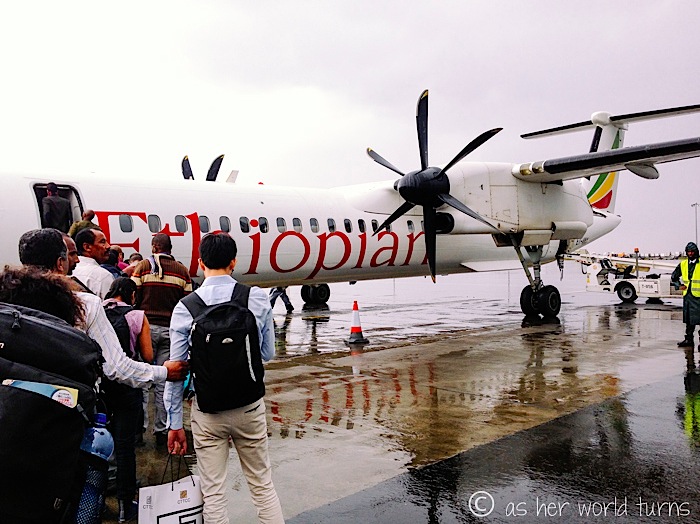
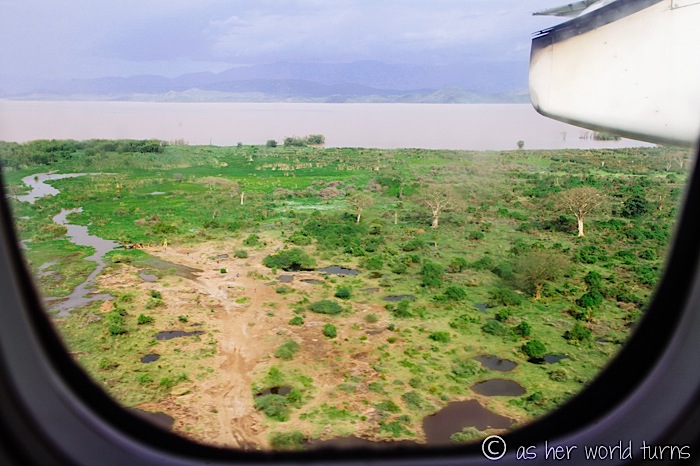
Arba Minch is close to two bodies of water — Chamo Lake and Abaya Lake — which explains the lush vegetation.
This is my ride into town:
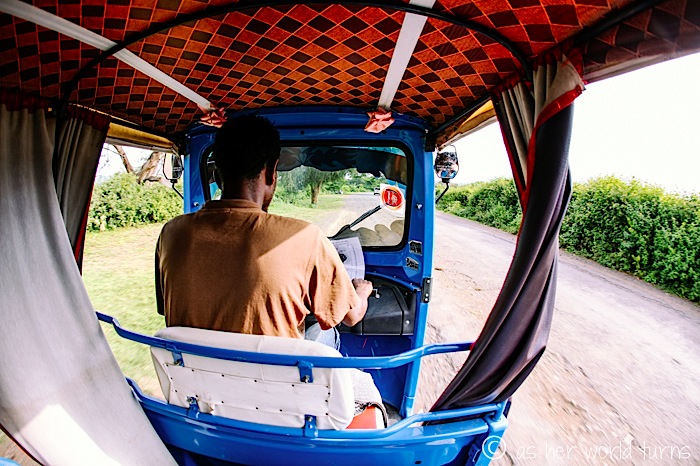
I hate to overuse this word as I’ve already employed it to describe my cinema experience in Addis Ababa, but the 20-minute ride into town is surreal, like something out of the pages of National Geographic. It’s unlike anything I’ve seen up to this point in my travels, a whole different level of fascinating and otherworldly. I spot the oldest man I have ever laid eyes on, donning a perfectly tailored suit and leaning on a cane as cattle pass by. Children play in the streets, moving aside when an infrequent car passes by. Women of all ages carry bundles of sticks or leaves, impossibly large burdens on their lean frames.
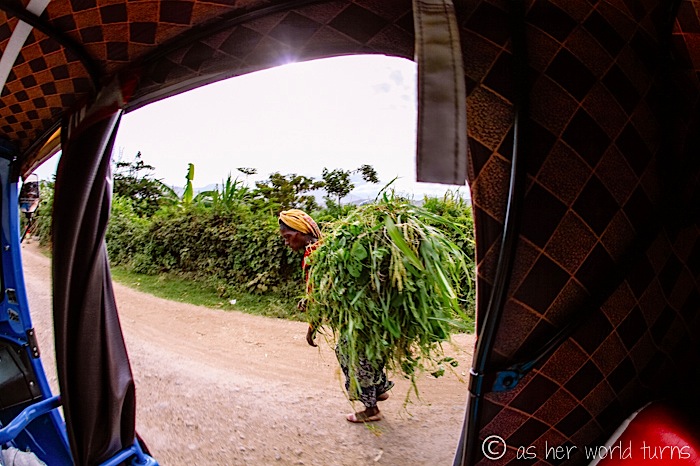
I don’t have anything booked but walk into Rift Valley Pension, where I get this room for 200 birr (around $10 USD) per night. It’s got a Western toilet — a luxury in this part of the world.
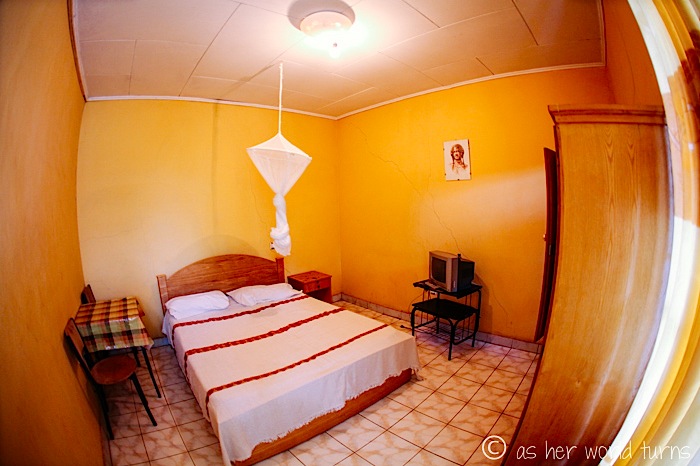
This hotel and cafe is a two-minute walk from the pension. It’s got cheap food, good coffee, wifi — all the basics for your average traveler.
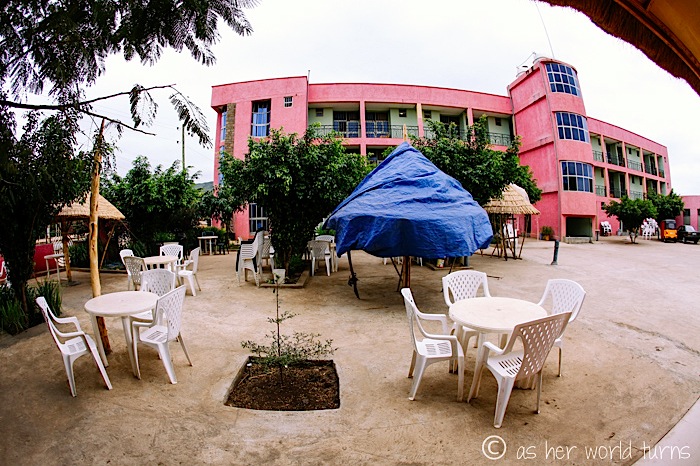
My plan is to meet up with a friend-of-a-friend who happens to be in Arba Minch. Isn’t that convenient? Ethiopia’s not exactly a tourist hot spot so I’m lucky to have this connection. Shout out to Phil for putting me in touch with Mike.
After dining in mostly Western establishments in Addis Ababa, I am eager to try local Ethiopian food. Mike suggests starting with injera, which is served with most meals — it’s a spongy, grey, oversized pancake typically served with a pot of warm lentil sauce. The injera is flavorless but the lentil sauce has a nice kick to it. The entire meal is both cheap (under $2) and healthy (in that there’s not too much to eat). We order this for lunch and dinner a few times during our time in Omo Valley and I call it the Ethiopian diet.
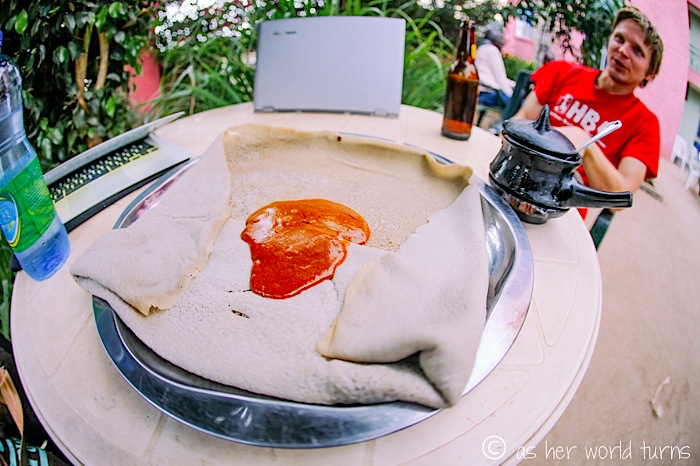
The next morning, we meet up with a driver who has been referred by our friend Phil’s guide from last year. After some back and forth negotiating rates, we settle on $150 USD per day (split between myself and Mike). It will take three full days with lots of driving to visit the main tribes in Omo Valley and cost a total of $225 each. On top of that rate, we will each pay for our own food and accommodation.
Members of the tribes expect to be tipped each time they are photographed (5 birr per person is typical, or about 25 cents), so we stop by the bank to stock up on 5 birr notes and coins. I am flush with birr.
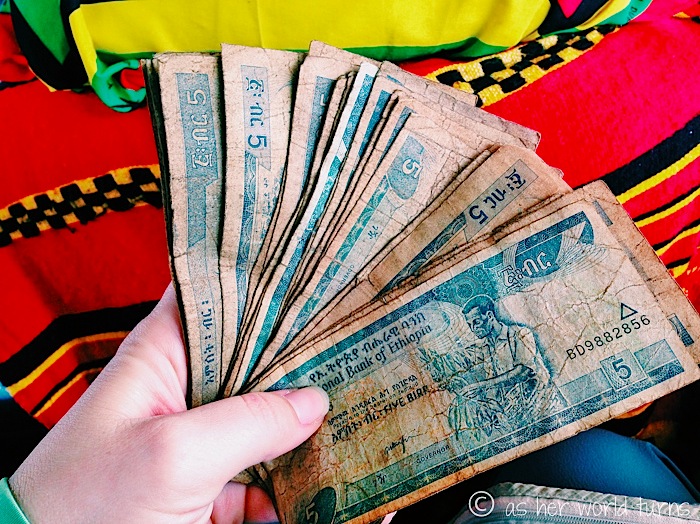
This is roasted barley with peanuts tossed in, a common snack sold in stands along the road. It’s quite tasty, just be careful not to crack a tooth on some of the harder kernels (if kernel is even the correct word for it).
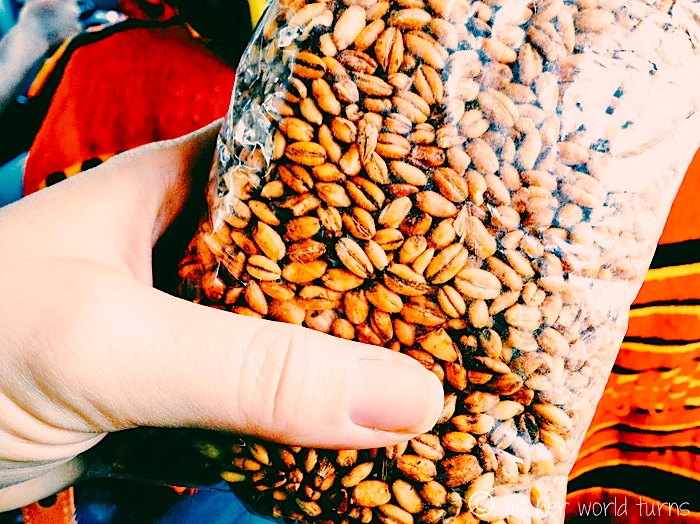
On our first full day of driving we pass by fields of “false banana” trees. That nickname comes from its resemblance to banana leaves, but this tree bears a bitter root-type product that is decidedly NOT a banana.
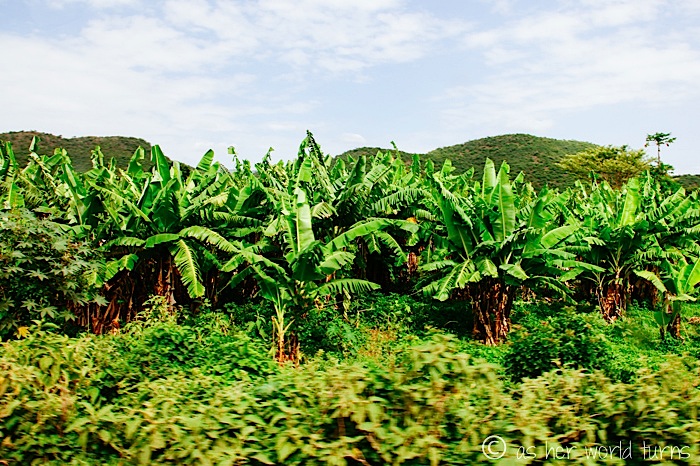
Taking photos out the window of our 4WD vehicle proves to be a frustrating endeavor as we navigate ubiquitous potholes, but I have to attempt to document these compelling glimpses into the rural Omo Valley lifestyle.
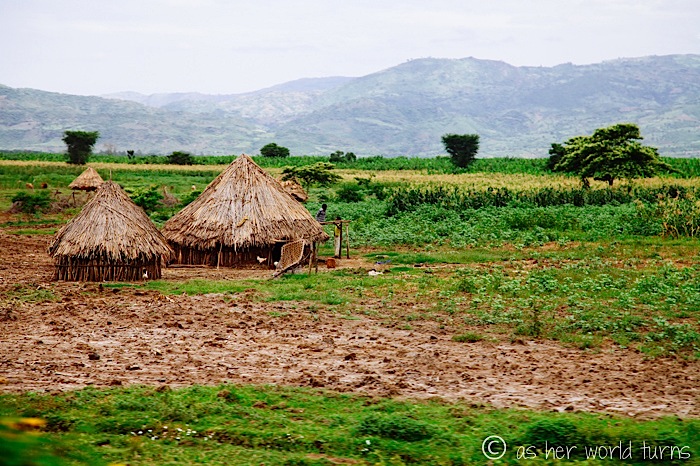
These round huts are called rondavels, thatched with hay and mud and sticks. Most of the homes we see are made of these materials.
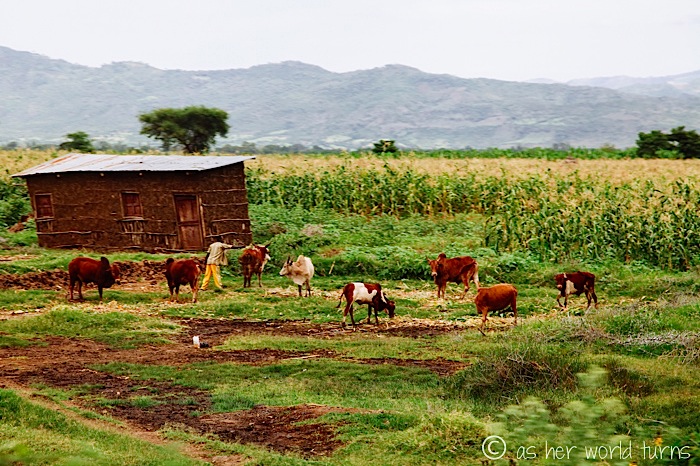
The roads here are primarily used by cattle and pedestrians, who walk right in the center of the pavement. Vehicles don’t come by very often so everyone moves to the side when a truck approaches, throwing a glance of annoyance in our direction for the interruption.
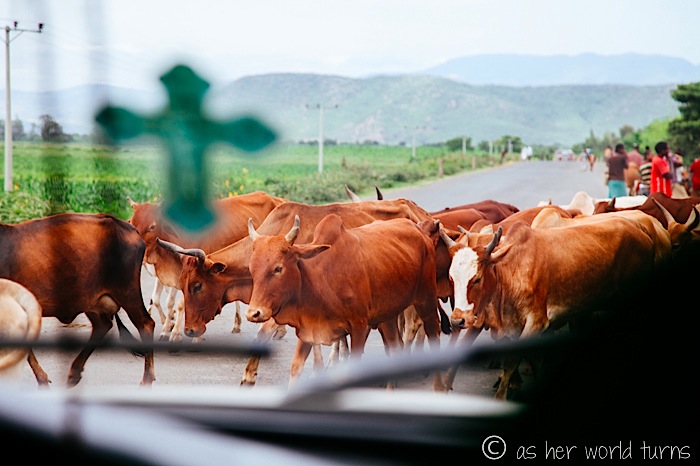
See, the bulls have that look of annoyance down pat. “Really? Again? Can’t you all coordinate your travel to minimize these disruptions to my day?”
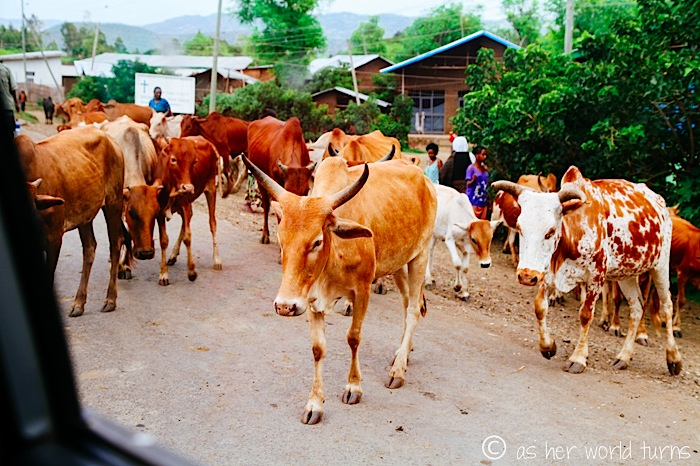
Water is the source of life and every time we pass a river there are people bathing, washing clothes, and gathering drinking water. For bathing purposes, the men typically go on one side of the bridge and women on the other.
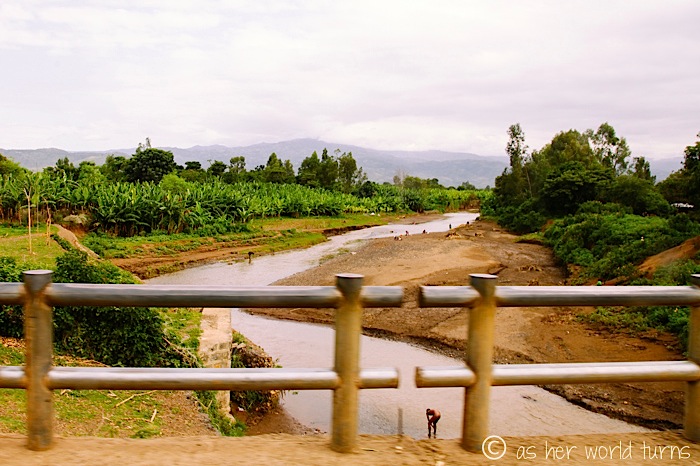
Much of the cattle have exaggerated bumps on the back of their necks, some more so than others. Surely these are aggravated by the heavy loads they carry? I’m disturbed and concerned for them, even as I realize how silly those feelings are. Regardless, they have my sympathies.
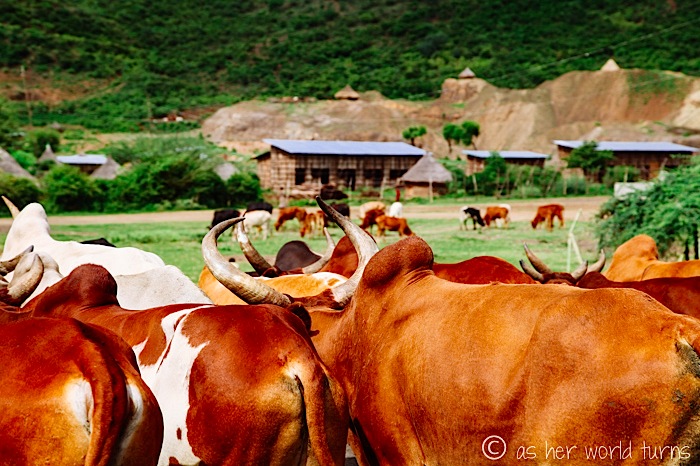
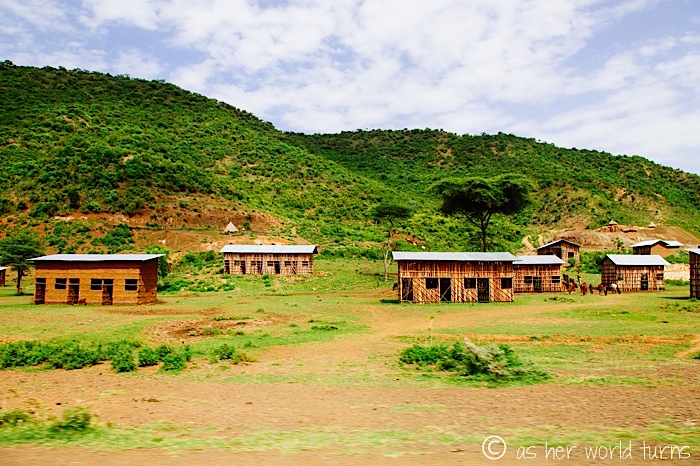
These are bee hives.
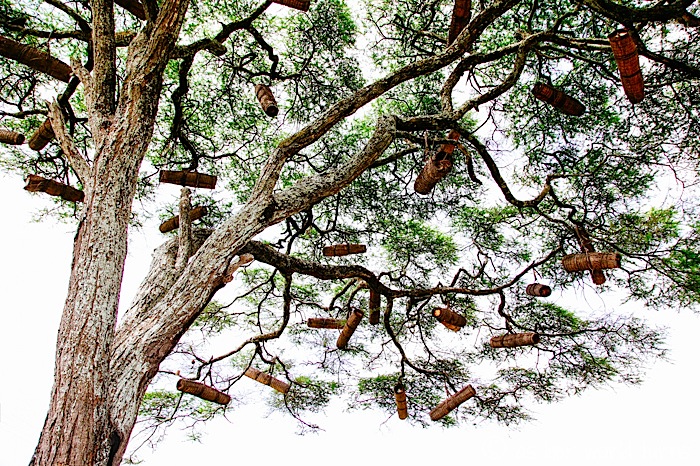
A closer look:
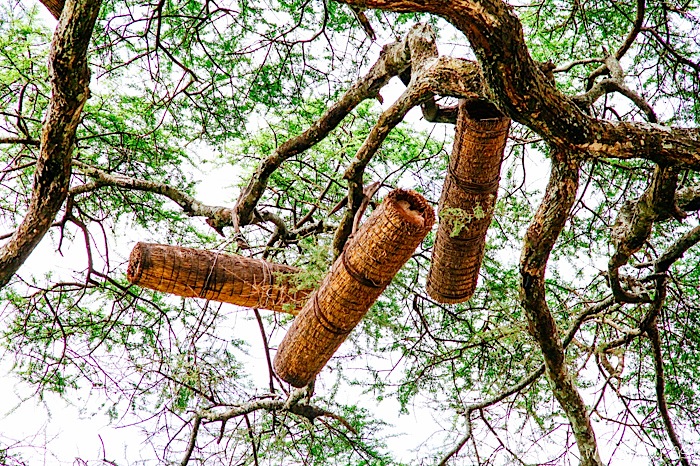
One day per week, each village has a market day. The crowds come out to purchase food, clothes, and more.
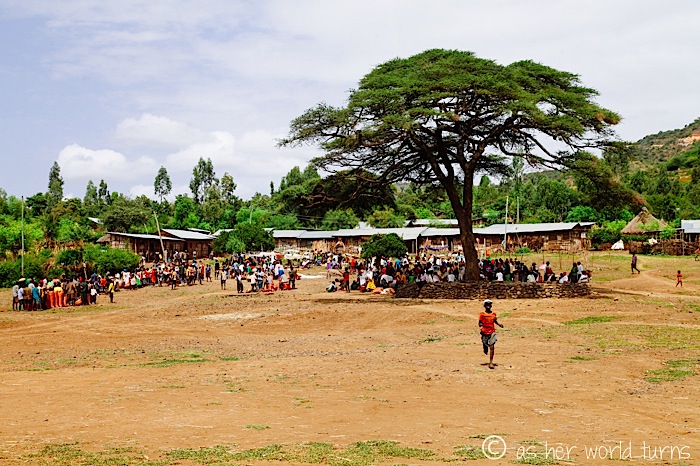
I don’t know what’s happening in the photo below, but a string of people move together in one direction.

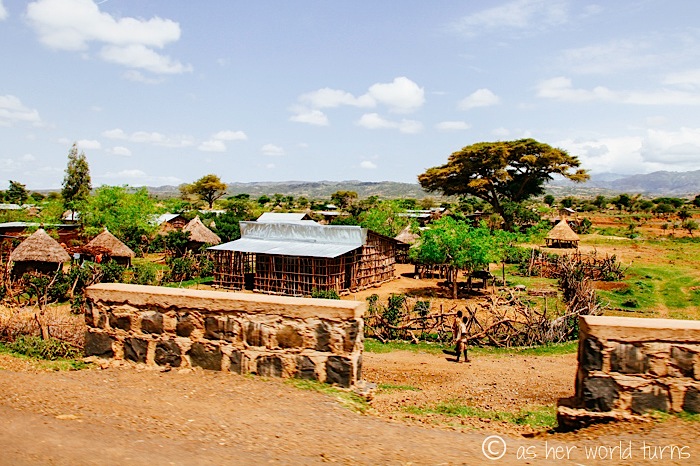
After hours of driving, we stop for lunch. That’s our driver Tezera, a Rastafarian from Dorze village in Omo Valley. Very nice guy.
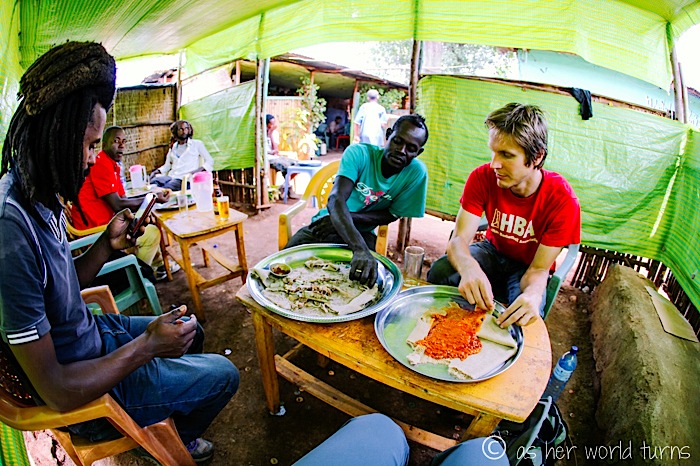
Mike and I split injera with lentil sauce for lunch:
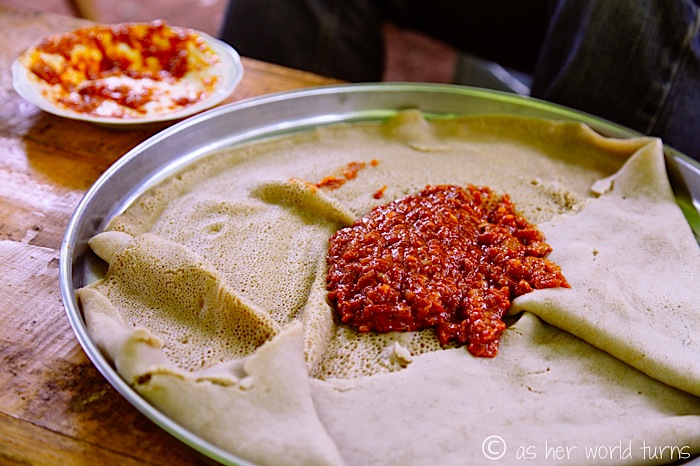
Our driver and his friend split tibs, which are pieces of meat with chile and onion tossed in. There’s no silverware / utensils — we all use the injera ‘bread’ to dip in the sauce or pick up the meat.
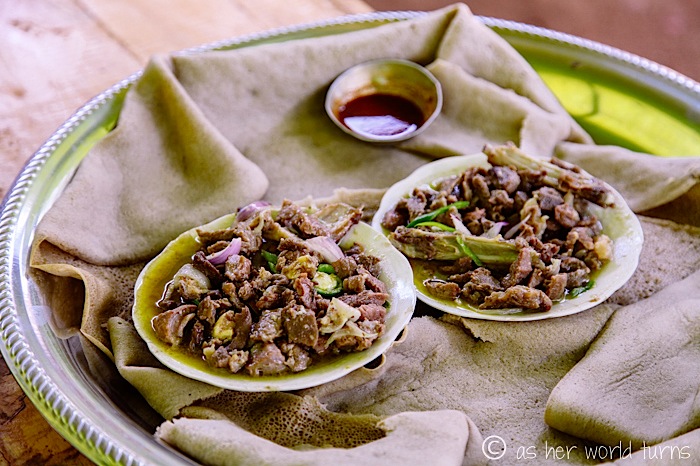
We’re only halfway through driving on our first day. We spend the afternoon passing by more people, cattle, and scenic landscapes.
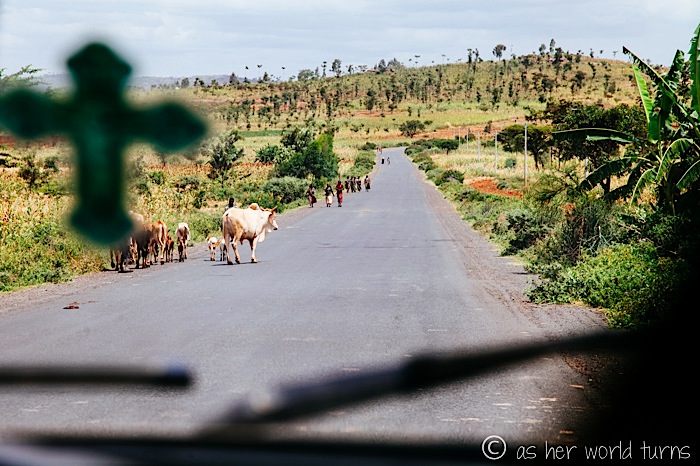
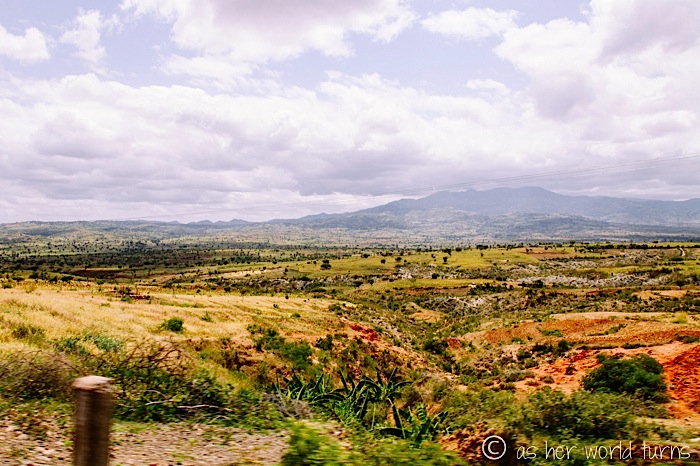
Another river used by locals:
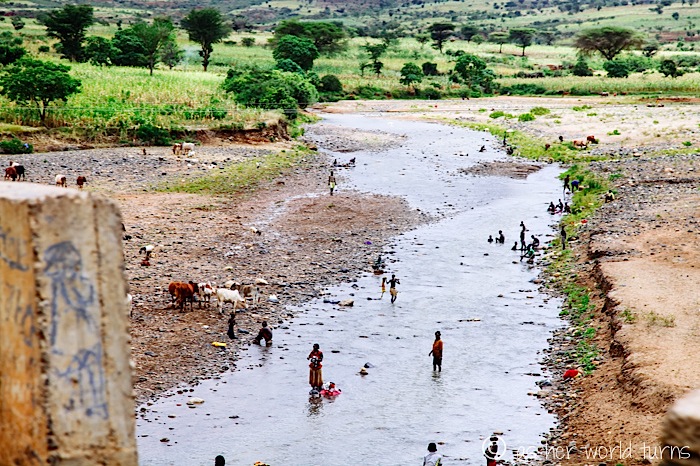
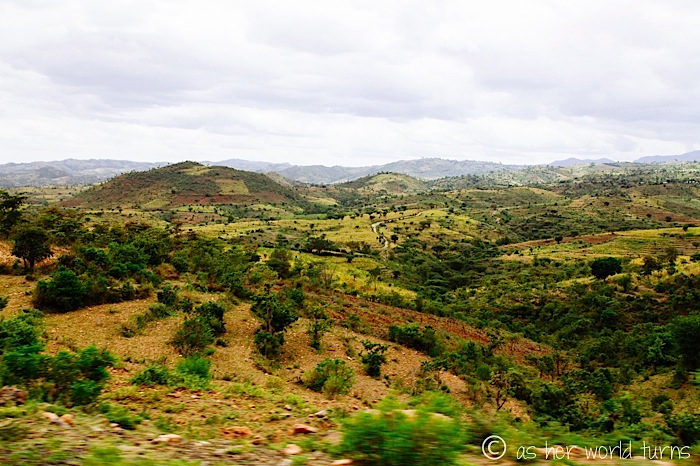
Our goal for today is to reach a Hamar tribe that’s scheduled a bull jump ceremony for this evening.
A bull jump ceremony is like an Ethiopian bar mitzvah — it’s a coming-of-age event for a young man that involves pomp, circumstance, and tradition. Things start off with the young women from the tribe beckoning the young men to whip them. There’s a give-and-take where the men resist and the women practically put the whips in their hands, begging them to use it. Ultimately the men oblige, lashing their sisters with the whips, drawing blood and leaving marks. This may sound extreme from our Western perspective, but to them it’s all part of tradition and they’re playing these roles in the ceremony. After an indeterminate amount of time — likely including song and dance and alcohol — comes the main affair. The young man of honor must literally jump the bulls — about a dozen of these animals are lined up next to each other with men from the tribe holding their horns and tails to keep them stationary. The young man rubs bull dung over his feet to make them extra slippery. Then he must climb up and run back and forth across backs of the bulls twice, probably slipping and eliciting laughter from his family and friends. He’s also totally nude during this process. Once he’s successfully run across the bulls’ backs — officially jumping the bulls — then he is a man, and a warrior in his tribe’s eyes.
To be honest, the bull jump ceremony is the primary reason I’ve come to Omo Valley and I’ll be sorely disappointed to miss it. But there’s no guarantee we’ll see it because the local Hamar tribes are especially dodgy about these events — their contacts, who are in touch with the tour drivers, deliberately lead them on about whether or not a bull jump ceremony is taking place on any given day. They want tourists to come so they might SAY there will be a ceremony, when indeed there is not one planned. But by then it’s too late and the tourists have arrived, prepared with money for photos tips. On our first day in Omo Valley our driver is on the phone with his contact, who has a different story every time he calls:
“There will be one tomorrow morning at 8am.”
“Oh, you’re too late, they did it today at 3pm.”
“Hurry now, go directly to the site, you might just make it!”
It changes hourly and I can’t tell you how infuriating this is. But it’s totally out of our hands — either we’ll get to see one or we won’t. I have trouble relinquishing control, however, and it cuts into the experience for me.
This isn’t fully explained to us at the time, but we find out later that there are certain “mandatory” stops on the Omo Valley itinerary, and if we skip them it’s a breach of this unofficial protocol. One of these stops is a market where a local “guide” shows us around for a fee of several dollars each. Mike and I take a quick walk around the market where women sell beads and coffee and fruit. We finish in under five minutes, because at that point we think we have to move quickly to make a bull jump ceremony, and decline to pay our “guide.” The whole thing feels very sketchy like he’s trying to squeeze money out of us. Adding to the uncomfortableness is the herd of locals pestering us to take their photo in exchange for tips. At that moment we’re the only white people in the market and you’d think we have magnetic powers for how many people have gathered around us with palms outstretched in anticipation of coins. This market experience is overwhelming and I don’t take a single photo, instead eager to get back to the safety of our car. Little do I know this is only the beginning.
Back in the car, there’s a confusing round of calls between our driver and his contact about the time and location of bull jumps in the area. We are strongly encouraged to head to one taking place right now about 90 minutes away. This sounds like a waste of time because we’ve likely already missed it, but since there are no ceremonies scheduled for tomorrow, it might be our only shot. We take it.
Our driver turns down this dry riverbed and continues along it for a long time. We pass young camels:
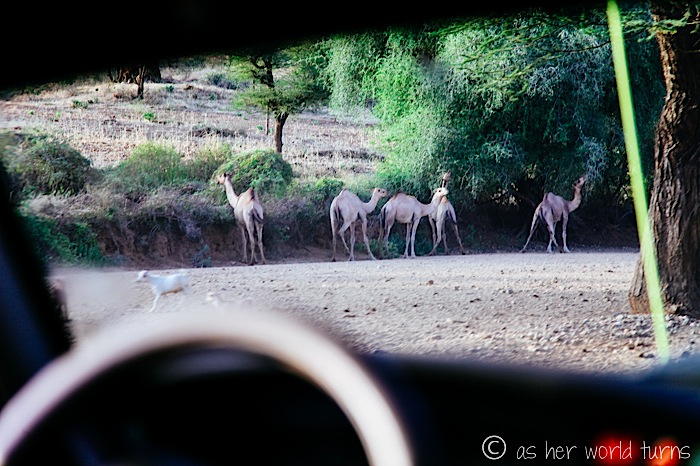
And eventually we pull up to several other 4WD vehicles. This looks promising.
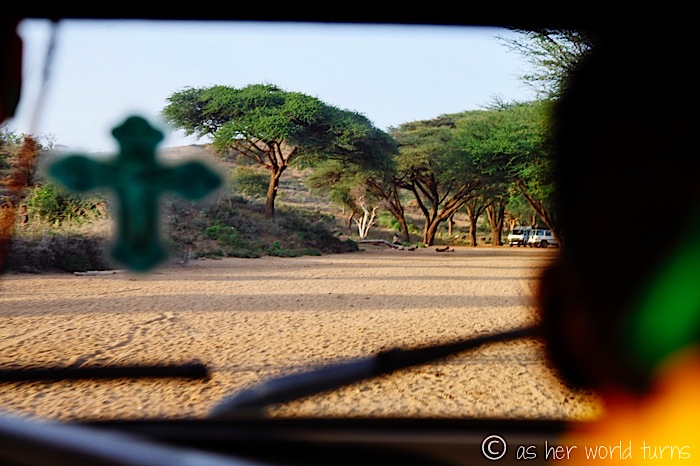
We scramble out of our car and a local guide hurries us up towards the ceremony. These rondavels grab my attention along the way and I pause to snap a photo.
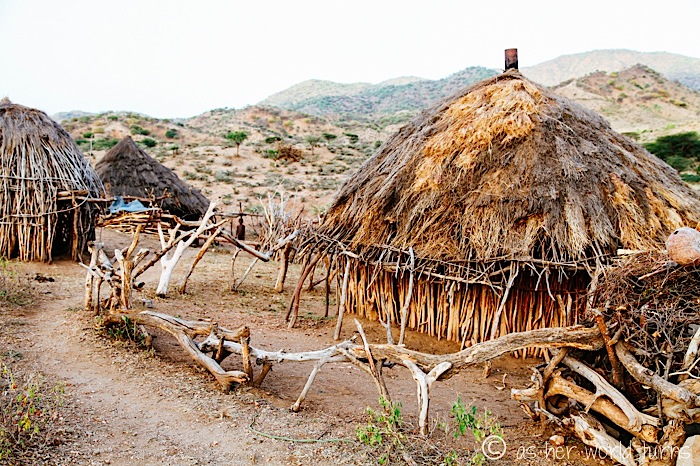
We press on, but it’s too late. Everyone is headed back towards the main huts. The bull jump ceremony is over.
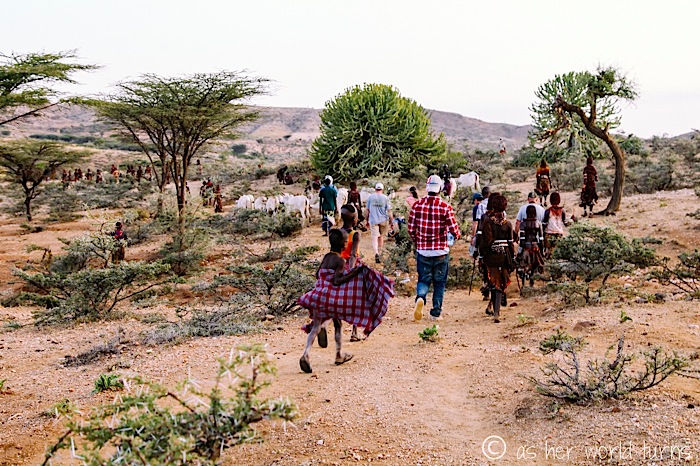
We’ve only narrowly missed it, and had one thing gone faster during our day we might’ve gotten there in time — for example, Mike and I requested to depart at 7:30am that morning, but it was nearly 9am by the time our driver arrived and we sorted out the price. Or if we’d skipped that afternoon market entirely, it would’ve saved 20 minutes and perhaps we could’ve caught the actual bull jump (but missed the whipping). Or if our contact in touch with the tribes had more reliable information earlier in the day we could’ve streamlined our lunch schedule. But it’s done and we won’t get another shot to see a bull jump during our time in Omo Valley. I’m beyond disappointed.
Trying to salvage something, I ask two passing women from the Hamar tribe if I can take their photo. They say yes, for the usual tip. I make the mistake of giving them the tip BEFORE taking the photo… and they immediately demand more money and refuse to pose. But of course they keep the coins I’ve already given them. Okay then, I’m not warming up to this tribe experience.
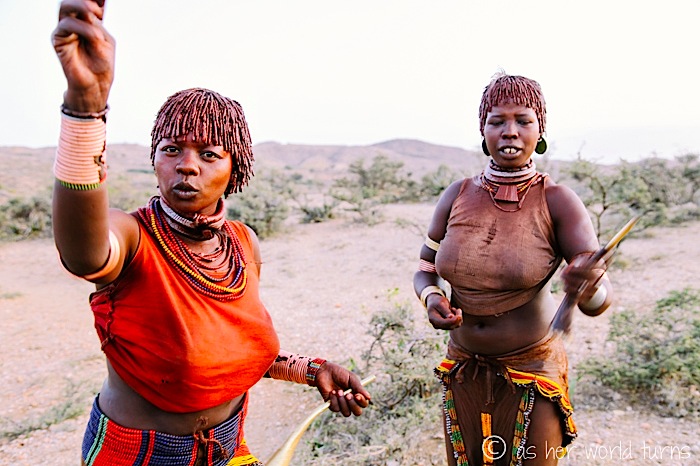
But these cows happily pose for free:
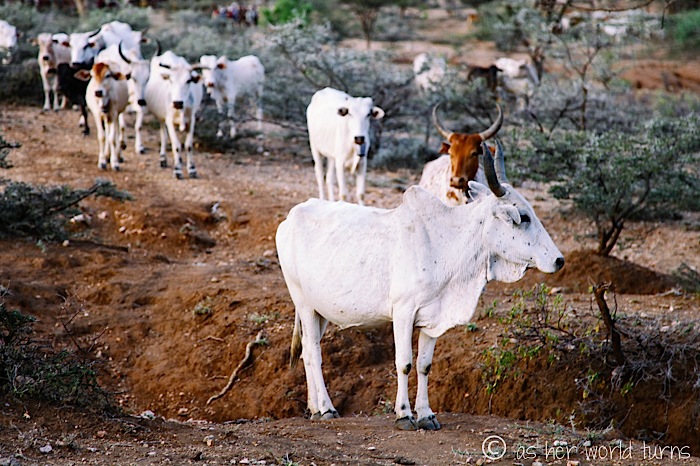
So does this tree:
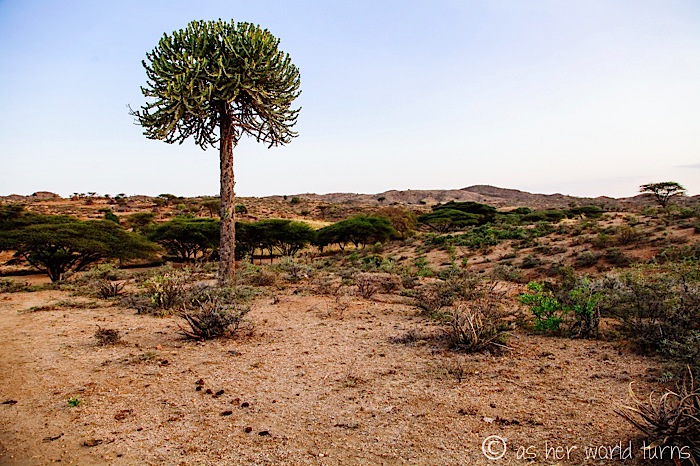
We dejectedly make our way back to the dried river bed and our vehicle.
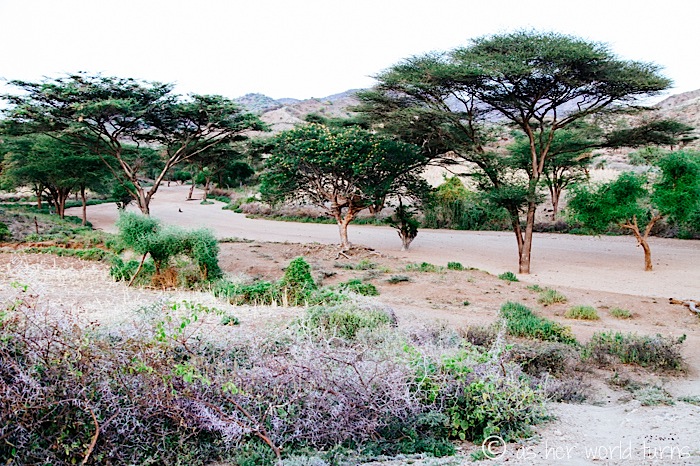
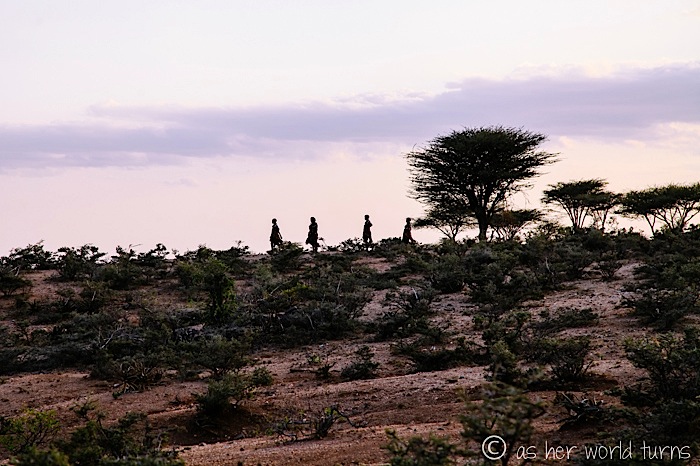
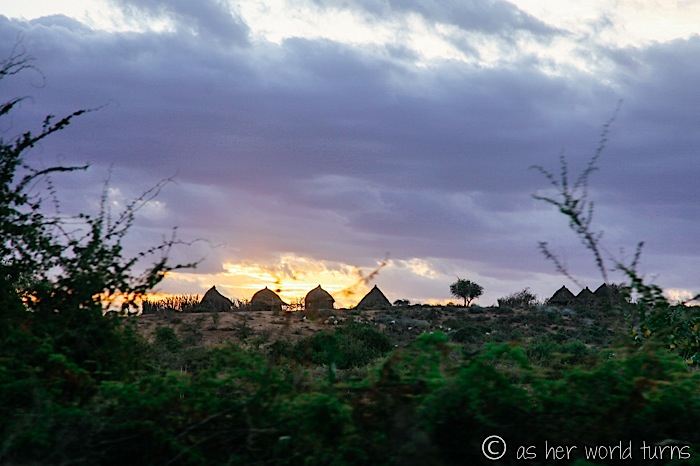
I ask our driver to stop on the side of the road for sunset. It really is a glorious one.
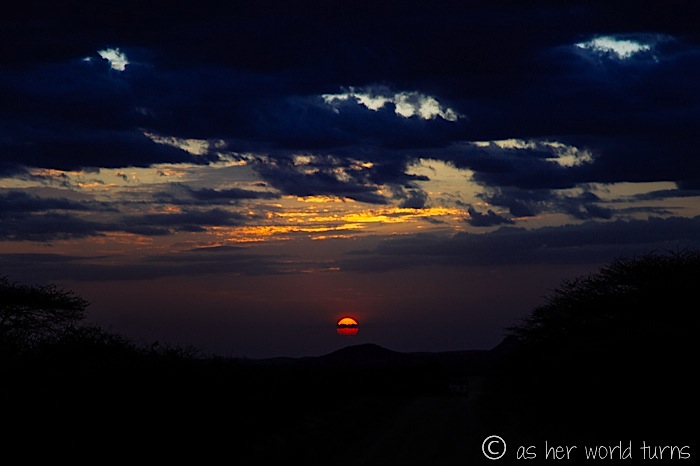
We spend the night at a modest (to say the least) accommodation that costs about $8. My room is below. There is a light but no light switch (or power outlet, for that matter) so I wait to sleep until the electricity shuts off at 10pm. There’s a communal squat toilet a few hundred yards away. No shower. More injera with lentil sauce for dinner.
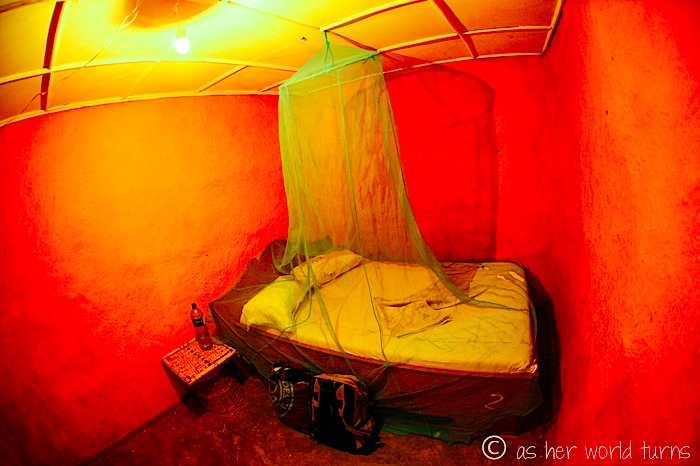
I vacillate between feeling distraught and apoplectic over today’s turn of events. After all the time, energy, and money spent getting here — I gave up visiting the sunken churches of Lalibela for this! — it’s starting to feel like a waste. Once you start to fall down that well of despair, it’s tough to climb out. But travel is a mixed bag of both missed opportunities and pleasantly unexpected twists — you never know what you’re going to get, and it’s best to roll with any outcome… although that’s easier said than done. This time, I sit with my disappointment a little longer than I’d like to admit.
The next morning I try to turn it around. For a few dollars we get bread, butter, jam, and tea for breakfast.
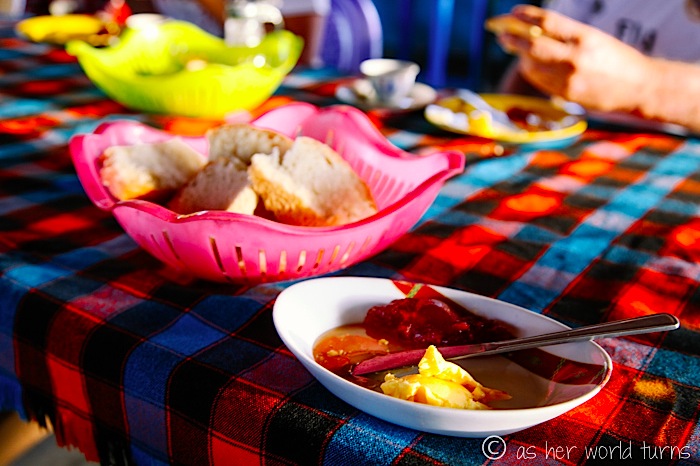
Here’s the dining area:
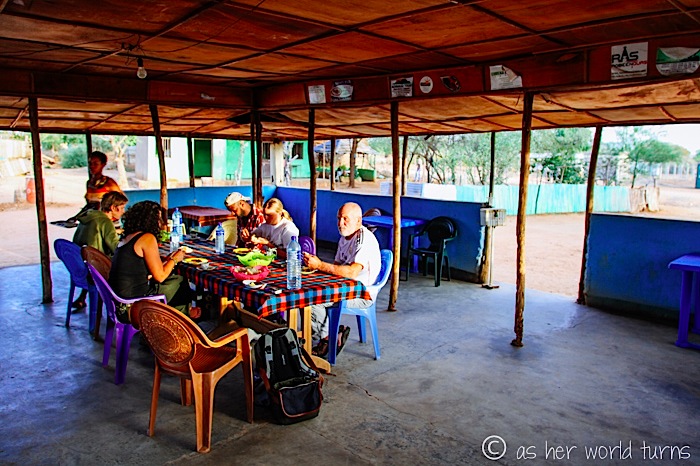
The highlight of this accommodation is meeting three friendly Australians who markedly brighten my mood — Dennis, Kiera, and Lucy. We chat over dinner the night before and again during breakfast. All three of them met during their long overland travels in Africa; they have been on the road for months and gleefully share details of their experiences, giving me a glimpse of what lies ahead on my own trip. I am so grateful to have met them, and for their kindness in lifting my spirits after an otherwise disappointing day.
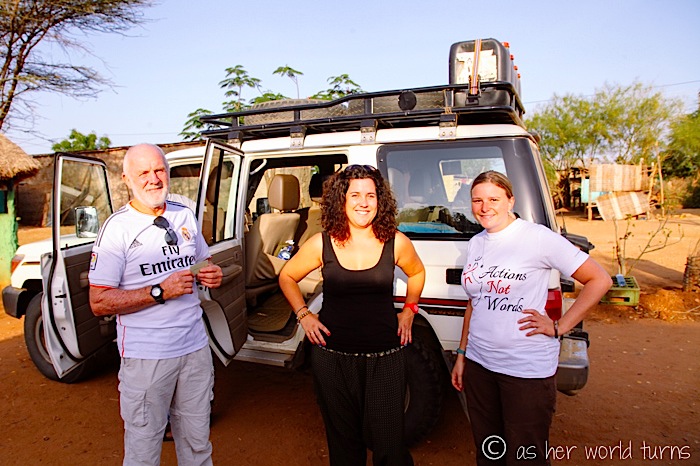
Travel is about a lot of things, but perhaps most significantly it’s about the people you encounter along the way.

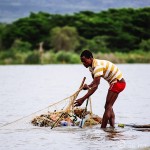
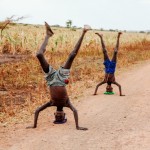
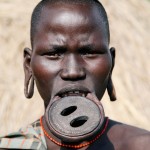
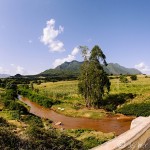
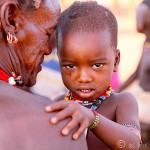
Hello, do you have an email contact for your driver? The price you paid seems really good to me, even after some years… I am struggling to find a tour guide with an affordable price.
Thanks!
Hi Davide! Unfortunately I can’t find our driver’s email address. And since we found him via a third party (he was someone’s cousin, I think?) I don’t know how to track him down. I wanted to make sure you saw my Ethiopia budget post, as in 2016 a reader emailed me updated information RE: prices he paid to travel in Omo Valley, and perhaps that would be helpful to you — here is that budget post. Good luck planning your trip!